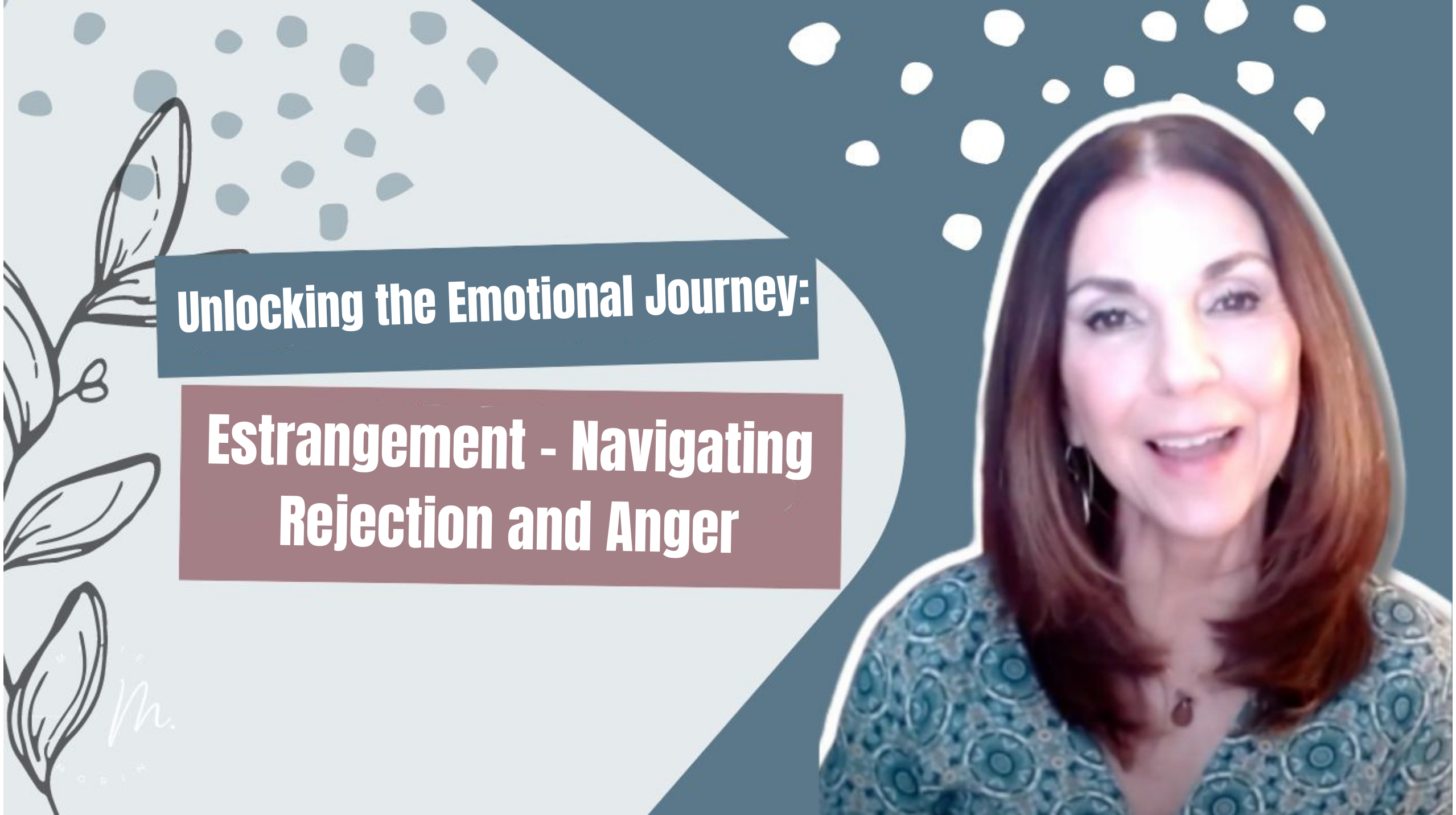Estrangement: An Exploration of Complexity
Estrangement is traumatic, It is a complex and challenging experience, involves the emotional or social detachment from someone close. In this exploration of estrangement, we delve into its varied nature, examining the potential impact on emotional well-being and emphasizing the importance of seeking support in the healing process. Estrangement is often traumatic, evoking deep-seated feelings of rejection, abandonment, and anger. These emotions can intensify the already complex journey of estrangement, making it crucial to address and navigate them with compassion and understanding.
I. The Varied Landscape of Estrangement:
Understanding the Multifaceted Nature
Estrangement is not a uniform phenomenon; its impact varies significantly based on factors such as the nature of the relationship, reasons behind the detachment, and individual coping mechanisms. Moreover, the duration and intensity of estrangement can also play a crucial role in shaping its emotional toll on the individuals involved.
A. Family Ties:
Navigating Emotional Turmoil
Estrangement from a family member can be particularly profound, often resembling the grieving process for a significant loss. Feelings of abandonment, betrayal, and sadness may complicate the emotional aftermath. Consequently, individuals may find themselves grappling with a myriad of conflicting emotions, amplifying the complexity of their experience.
B. Friendship Bonds:
Dissolution and Disconnection
The dissolution of a close friendship can trigger similar emotions, with a sense of loss and betrayal resonating deeply. Coping mechanisms may differ as friendships often involve a unique blend of emotional investment and shared experiences.
C. Romantic Relationships:
Intimacy and Emotional Fallout
In romantic relationships, estrangement can be accompanied by complex emotions, encompassing grief and betrayal and the added layer of intimacy. The impact on one’s emotional well-being may be heightened in such instances.
II. Understanding the Emotional Impact:
Navigating the Emotional Rollercoaster
Estrangement transcends mere detachment; it initiates a cascade of emotions that mirrors the grieving process, leading to profound sadness, anger, and confusion. As individuals grapple with the rupture of once-close relationships, they often navigate a complex emotional landscape fraught with turmoil. This emotional upheaval can be overwhelming, eliciting intense feelings of loss, betrayal, and abandonment. Moreover, the uncertainty surrounding the estrangement can fuel feelings of confusion and disbelief, further exacerbating the emotional distress. In essence, estrangement catalyzes profound introspection and emotional reckoning as individuals confront the shattered remnants of their once-cherished connections.
A. Grief and Loss:
Mourning What Was Lost
The emotional toll of estrangement often manifests as grief, echoing the stages of mourning. Individuals may grapple with a sense of loss, mourning the absence of a once significant connection.
B. Betrayal:
Shattered Trust and Emotional Fallout
Feelings of betrayal often accompany estrangement, deepening the emotional impact. Trust, once implicit, may be shattered, leaving individuals questioning the authenticity of their past relationship.
C. Physical Manifestations:
The Intersection of Mind and Body
The emotional turmoil of estrangement can extend beyond psychological distress, manifesting physically. Sleep disturbances, changes in appetite, and other somatic symptoms may emerge, highlighting the interconnectedness of mental and physical well-being.
III. The Subjectivity of Trauma:
Exploring Individual Experiences
Trauma is a subjective experience, and the impact of estrangement varies from person to person. The circumstances surrounding the detachment play a crucial role in determining the level of trauma experienced.
A. Duration and Emotional Investment:
The Depth of Emotional Involvement
Long-standing relationships and deep emotional investment can significantly amplify the trauma of estrangement, intensifying the emotional toll on the individuals involved. Transitioning from closeness to estrangement can evoke a profound sense of loss and disconnection, especially when the bond between individuals has been nurtured over many years. Furthermore, the depth of emotional investment in the relationship often correlates with the intensity of the trauma experienced as individuals grapple with the shattered remnants of their once-cherished connections. The more intertwined one’s life is with the estranged individual, the more intricate and challenging the process of disentangling becomes. This complexity arises from the entanglement of shared memories, experiences, and intertwined lives, making it difficult to untangle oneself from the emotional web of the past. Moreover, navigating the aftermath of estrangement requires individuals to redefine their sense of identity and purpose as they reconcile the loss of a significant relationship and chart a new course. In essence, the trauma of estrangement is compounded by the depth of emotional investment and the complexity of the relationship dynamics, underscoring the need for compassionate support and understanding as individuals navigate this challenging journey.
B. Circumstances and Context:
Understanding the Why
Estrangement Is Traumatic and he reasons behind estrangement significantly shape the traumatic experience. Understanding the circumstances is pivotal in navigating the complex emotional landscape, whether it’s a result of conflict, differing values, or personal growth.
IV. Seeking Support in the Healing Process:
Embracing the Journey Towards Healing
Acknowledging the emotional challenges of estrangement is crucial, and seeking support is a vital step in the healing process. Friends, family, or mental health professionals can provide a supportive expression, understanding, and coping environment.
A. Breaking the Silence:
Initiating Conversations and Breaking Barriers
Initiating conversations about feelings surrounding estrangement can be challenging, yet it is an essential step in breaking the silence and fostering understanding. Transitioning from silence to open dialogue requires courage and vulnerability, but it is a pivotal moment in the journey toward healing and reconciliation. By openly discussing feelings and experiences, individuals can unravel the complexities of estrangement and gain insight into their emotions. Furthermore, these conversations serve as a bridge for understanding, allowing both parties to express themselves authentically and empathize with each other’s perspectives. Open communication breaks down barriers, and the foundation for rebuilding relationships is laid. Therefore, while it may be daunting to broach the topic of estrangement, the rewards of fostering open dialogue and mutual understanding are invaluable in the journey toward healing and reconciliation.
B. Professional Guidance:
Navigating the Path to Healing
Mental health professionals offer valuable insights and coping strategies for navigating the emotional complexities of estrangement, serving as beacons of guidance and support in times of turmoil. Transitioning from a state of distress to one of healing often requires the expertise and advice of trained therapists who specialize in addressing relational challenges and emotional wounds. Therapy provides a safe space for processing emotions, allowing individuals to explore their feelings in a supportive and non-judgmental environment. Moreover, therapy offers a structured framework for clarifying the underlying dynamics of estrangement, helping individuals make sense of their experiences and chart a path toward healing. Through therapeutic interventions such as cognitive-behavioral therapy (CBT), dialectical behavior therapy (DBT), or family therapy, individuals can acquire valuable coping skills and interpersonal strategies to navigate the complexities of estrangement with resilience and grace. Therefore, seeking professional help is not a sign of weakness but a proactive step towards emotional well-being and healing.
C. Establishing Healthy Coping Mechanisms:
Building Resilience and Self-Discovery
Developing healthy coping mechanisms is imperative for emotional recovery as individuals navigate the challenges of estrangement. Transitioning from distress to stability requires intentional efforts to cultivate resilience and prioritize self-care. Engaging in activities that bring joy, such as hobbies or spending time with loved ones, can provide a much-needed reprieve from the emotional turmoil of estrangement. Moreover, whether through meditation, exercise, or relaxation techniques, self-care fosters a sense of well-being and promotes emotional balance. Transitioning from distress to stability requires intentional efforts to cultivate resilience and prioritize self-care. Additionally, fostering resilience involves adopting a growth mindset and embracing challenges as opportunities for personal growth. By developing healthy coping mechanisms and promoting resilience, individuals can lay the groundwork for emotional recovery and navigate the complexities of estrangement with strength and resilience.
Conclusion:
Navigating Estrangement with Resilience and Self-Discovery
Estrangement is traumatic and is a multifaceted experience that demands acknowledgment and understanding. By exploring its varied landscape, recognizing the emotional impact, understanding the subjectivity of trauma, and seeking support in the healing process, individuals can navigate the complex terrain of estrangement with resilience and self-discovery. Remember, in reaching out for support, you embark on a journey toward healing, resilience, and the rediscovery of emotional well-being.









